Is it too difficult to learn flower arrangement? Here is a stepbystep guide on how to learn flower arrangement in 30 minutes!
Fragrant breath, graceful posture,
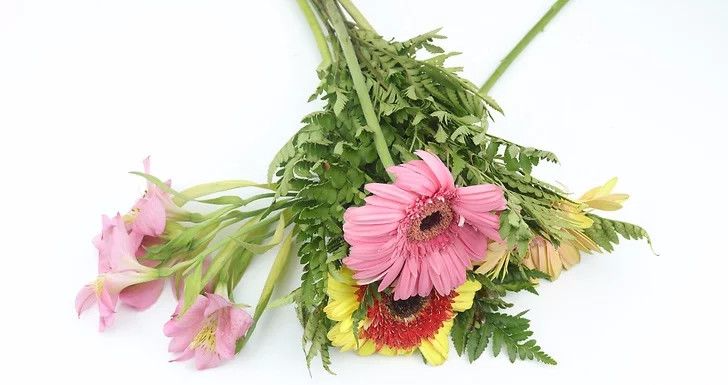
It is better to have a noble soul than a gorgeous appearance; it is better to let people admire your character than to let them envy your position. Learning flower arrangement is not a profession, but a kind of cultivation. It advocates nature, simplicity and elegance. It is a specific technique and also your natural beauty that makes people appreciate it.
Instead of chasing after wealth, it is better to cultivate one's talent; instead of fighting for power, it is better to improve one's inner ability. Flower arrangement has been a representative of literati and poets since ancient times. Women's flower arrangement is beautiful and intelligent. Men's flower arrangement is a gentleman's demeanor. Instead of chasing after wealth, it is better to cultivate one's talent; instead of fighting for power, it is better to improve one's inner ability. Flower arrangement has been a representative of literati and poets since ancient times. Women's flower arrangement is beautiful and intelligent. Men's flower arrangement is a gentleman's demeanor.
Rather than relying on luck when things don't work out, it's better to lay a solid foundation and keep your ambition in mind. Soul, character, talent, ability, and ambition are things that others can't take away. You can use them to dominate yourself. The rest are just clouds and not worth mentioning.
Learning flower arrangement adds a touch of lightness and delicacy. She walks by step by step with a bright smile, giving you a spring-like intoxication and refreshing feeling.
So, let’s start with the first step below.
Planning your flower arrangement
= First Step =

1. Choose seasonal flowers. Choosing seasonal flowers can save you some money and make your flower arrangements look more appropriate, especially for special occasions such as weddings, anniversaries, and special birthday parties.
Spring: In spring, the most popular flowers include: daffodils, peonies, tulips, sweet peas, narcissus, hyacinths, anemones, lilacs, delphiniums, and boronia.
Summer: In summer, the most popular flowers include: lilies, gerberas, sunflowers, snapdragons, hydrangeas, delphiniums, freesias, lavender, forget-me-nots, Northern Irish bells, chrysanthemums, and tuberoses.
Fall: In the fall, the most popular flowers include: dahlias, marigolds, zinnias, starflowers, chrysanthemums and asters.
Winter: In winter, the most popular flowers include camellias, poinsettias, Christmas stars, star-shaped lilies, jasmine, hollies, cosmos and amaryllis.
Perennial: Perennial flowers include: orchids, gardenias, roses, lily of the valley, baby's breath, proteas, orchids, heather, gladiolus, eucalyptus and romantic sea.
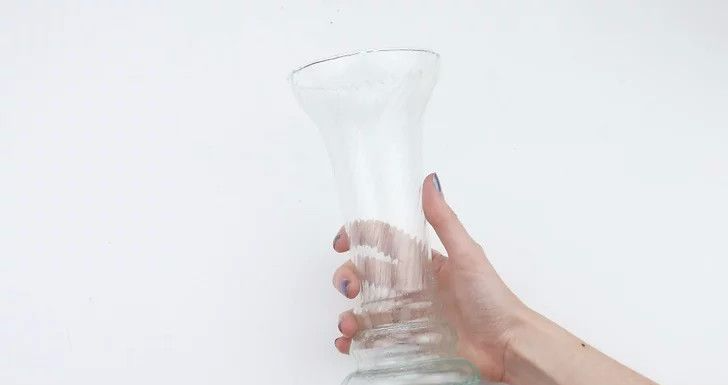
2. Choose a container. The container you choose depends on what you want your flower arrangement to look like. Almost any type of container can be used for flower arrangements as long as it has the right height, weight, and appearance.
To a certain extent, long, slender, and trumpet-shaped vases are best suited for long flowers, such as lilies and irises, while shorter vases are more suitable for flowers with large heads and short stems, such as roses and chrysanthemums.
Go beyond the standard vase and let your imagination run wild when it comes to using it as a container for your flower arrangements. You can use egg cups, champagne bottles, wide-rimmed bowls, old boots, umbrella stands, teacups or candlesticks as containers.
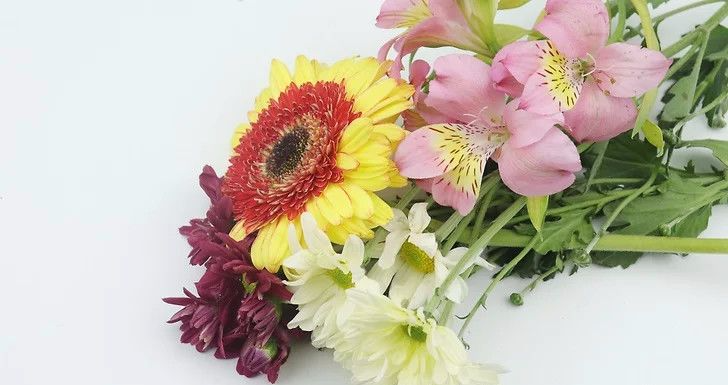
3. Use complementary colors. Color is very important when arranging flowers, but there are no hard and fast rules about what color combination is best. It mainly depends on your habitual style and personal preference. But there are still some things to pay attention to:
Add complementary colors to your flower arrangements to make them colorful. Try pairing reds and oranges with those fresh greens. Or mix pinks and purples with the white of baby’s breath.
Try adding some other colors within the same flower, or adding some of the same color to the shadows, or adding some darker colors around the green leaves at the mouth of the vase.
Or, you could try a mix of colors in your vase, like orange, white, and yellow gerberas or purple tulips.
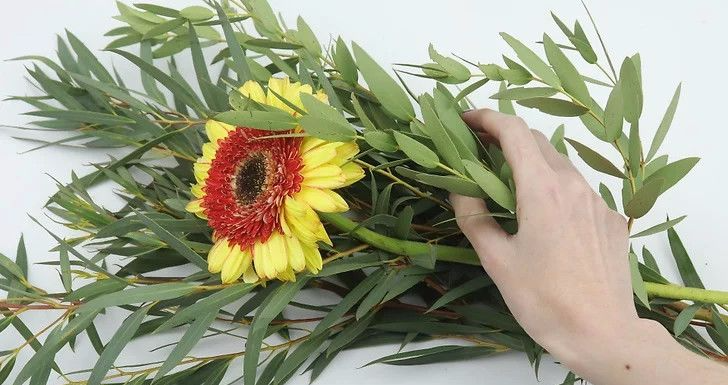
4. Add some texture. A bouquet shouldn’t be all flowers. You can add some greenery to create some texture, such as some woody stems or other seasonal plants.
Try adding some long grasses to your flower arrangements, such as berry stems, pussy willow, corn stalks, sour dock, or iris leaves.
For more seasonal arrangements, try adding pine cones, pumpkins, winter squash branches, and other fruits or vegetables.
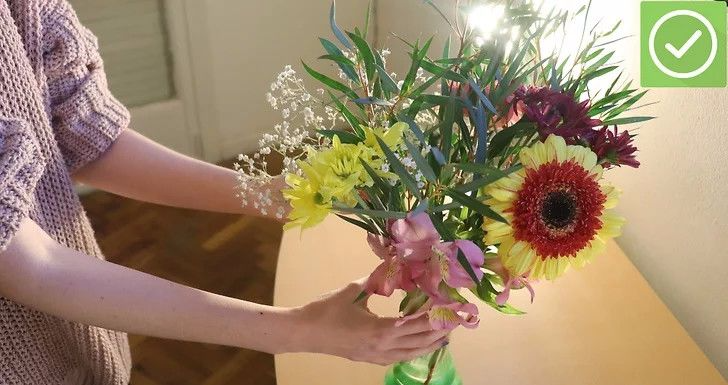
5. Consider the location of the flower arrangement. The last thing you need to consider is the purpose and location of the flower arrangement. Consider the color scheme and the atmosphere of the room. You also need to consider the available space.
For example, a few brightly colored flowers can brighten up a dark (and lifeless) hallway or spruce up a drab bathroom, while a few soft, pastel-colored flowers can make an airy, sunny room seem richer and fuller.
You should also consider the size of your flowers when arranging them. A small, colorful pot of daisies might look lovely on a coffee table, but it might be a eyesore on a kitchen table. Similarly, a tall vase of flowers might be appropriate in a hallway, but it might detract from the conversation if it's on your dining table.
Preparing flowers and other materials
= Step 2 =
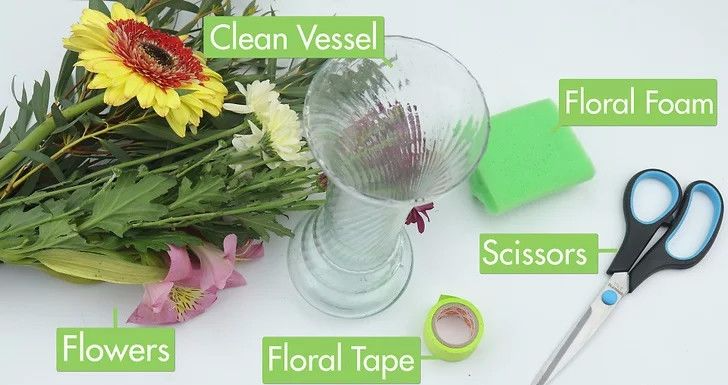
1. Gather the necessary materials. Before jumping into flower arranging, it is important to gather materials that are easily available - this will make the flower arranging process more efficient. What materials to prepare depends on the type of flower arrangement. You may need some or all of the following materials:
A clean container to hold the flowers - this could be a vase, a bowl or a basket (among other things), depending on the number and size of the flowers.
Some floral foam or floral buttons (place the flowers in an open container).
Some floral tape or rubber bands (to tie your flowers together, especially if you're using a tall or narrow vase).
A sharp knife or floral shears (for trimming flower stems).
Some embalming fluid (usually used on fresh flowers).
A clean, spacious area covered with newspapers.
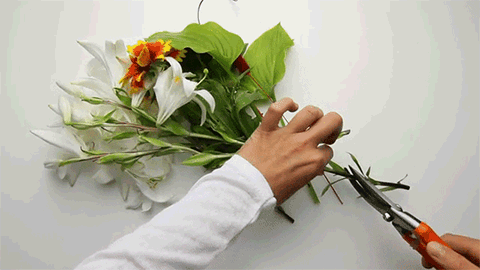
2. Trim the stems and leaves of flowers. Before arranging flowers, it is necessary to trim the stems and leaves of flowers. This can make it easier for flowers to absorb water and keep them fresh. Use a sharp knife or garden shears to cut the rhizomes of flowers at an angle 1 foot away from the roots. It is not recommended to use kitchen scissors because this may break the rhizomes, making them unable to absorb water well.
If you are away from pruning (for any length of time), remember to cut the rhizomes a second time directly before inserting them into the container before arranging the flowers.
You will also want to trim off any leaves that are below the water level before arranging your flowers. This is important because leaves will rot and contaminate the water in your container.[4]
Here's a tip for keeping flowers fresh: Immediately after cutting the flowers, soak the stems in a foot of boiling water. Once the water cools down (to lukewarm), place them in ice cold water. Wrap the flowers to prevent them from getting burned.
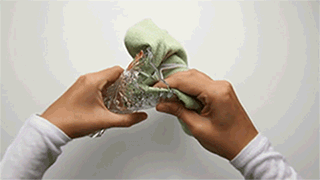
3. Prepare the container. The next step is to prepare the vase, pot or other container you plan to use for the flowers. Make sure the container is clean and intact, free of residue and dirt.
If you are using floral foam (a wonderful invention that allows for great control of the shape of your flower arrangements and allows the stems to absorb moisture), soak it in preservative (15 minutes). Then use a sharp knife to shave it into the desired shape. Place the shaved, damp foam in the container and secure it with floral tape.
If you're using a clear floral pin grid (which is great for supporting flowers with heavy roots or woody stems), place it in the container and secure it with tape or floral adhesive.
Alternatively, you can place green plants with woody roots at the bottom of the container and let them intertwine. This creates an organic grid pattern that allows you to successfully arrange your flowers.
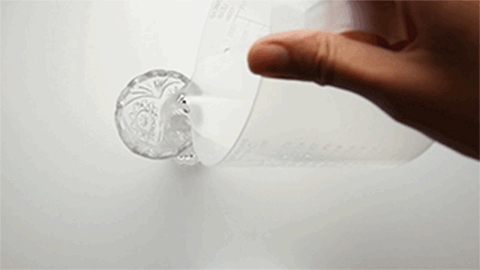
4. Add water. If you are using floral buttons, you can make them into a grid so that the flowers can stand upright on their own. At this point, you should add water to the container. If you are using floral foam, you do not need to add additional water.
Pour the water into the container and add a packet of preservative. If you don't have preservative, try adding a few drops of sodium chlorate bleach to the water as an alternative - this will kill bacteria in the water, which will help the flowers stay fresher for longer.
If your flowers have buds that are about to bloom and you want them to bloom sooner, you can add warm water instead of cold water. This works best with roses and ranunculus.
Making flower arrangements
=Step 3 =
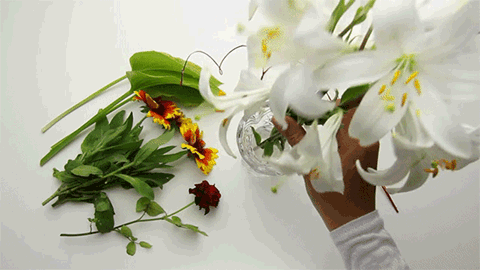
1. Arrange the larger, main flowers first. When you start arranging flowers, arrange the largest, most important flowers first.
It is best to insert flowers of the same type at the same stage, rather than inserting one flower and then another of a different type. This way, you can arrange the varieties, shapes, colors and layers of flowers more balanced.
Arrange the flowers in a circle, along the sides of the container. If you're using floral foam, the stems should fit easily. If this isn't easy, you can sharpen the stems to pierce the foam and insert the flowers - be careful not to make the holes too big (no wider than the stem) or the flowers will have trouble staying in place.
When arranging flowers, it’s important to keep an eye on the big picture to make sure everything is in its place – a turntable is a great tool for this.
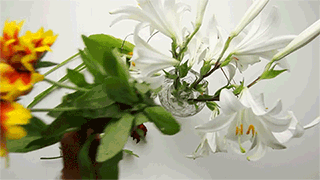
2. Layer the flowers. Once you have completed the first circle of flowers, you will then begin to insert the various other flowers.
When arranging the flowers, you should place them in the inner circle. Let the stems of the flowers in this circle be slightly longer than the flowers on the outside, creating a hemispherical effect. When the arrangement is complete, the flowers will look like they are blooming on the top of a mountain.
Continue layering your flower arrangement in this manner, adding variety by variety while arranging them according to size and quantity of the flowers.
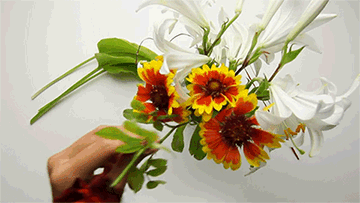
3. The number of flowers used in each layer should be an odd number. One of the main rules of flower arrangement is that the number of each flower should be an odd number.
For example, you can place 7 red roses in the outer circle, 5 red roses in the inner circle, and then use 3 baby's breath as embellishment.
This makes the flower arrangement look less monotonous and more organic and harmonious.
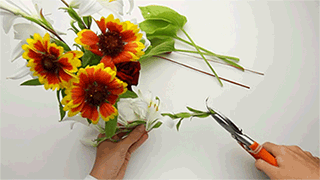
4. Pay attention to the height and width. When arranging flowers, the height and width of the flowers is another factor that needs to be considered.
The general rule is: In terms of height, the height of the flower arrangement should be 1.5 times the height of the vase (container).
There is no hard and fast rule for width, but it should be in harmony with the height.
When arranging flowers, constantly rotate the container to ensure that the height and width are coordinated.
5. Add leaves, berries or other greenery . After you have inserted all of your favorite flowers, you can insert green leaves, berries or other decorations.
This is a very important step - not only does it enhance the texture and liveliness of the flower arrangement, but it also helps to separate the flowers and promote air circulation, thus keeping the flowers fresh for a longer time.
Using filler material helps create the impression that the arrangement is fuller (seemingly more than it actually is), so you can create the appearance of luxury without spending a lot of money.